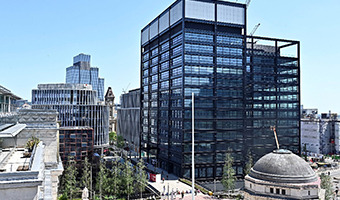Commercial property accounts for an estimated 20% of business operating costs. So, it follows that many businesses could make substantial savings by reviewing their workspace requirements.
Whether surrounded by empty desks following a restructure, outgrowing offices following a consolidation, or relocating premises, there are a number of ways in which occupiers can get better value from their floor space.
Here Nigel Oliver, Director in our Corporate Advisory Services team explains.
Up to £1 billion savings to be made through rationalisation of estates
Chancellor George Osborne has been busy with his calculator. After doing his sums he has estimated that the Government can make £2 billion of savings from civil service departments, partly by further rationalisation of property estates.
His calculations suggest that if all Government departments adopt the property benchmark of 10 sq m per person it could save something in the order of £300 million each year. Reviewing and rationalising property estates could result in a further £1 billion in savings.
This is an example many businesses and organisations should seriously consider following in 2013. The potential savings may be enormous and, in some extreme cases, could be a welcome alternative to cost cutting and redundancies.
Efficient use of office space essential for bottom line profits
A typical desk space could cost a business in the region of £8,000 per annum depending upon office location. Multiply that figure by the number of empty desks within an office or right across an organisation and it becomes clear just how much money is being wasted.
If you were to carry out a basic occupancy survey over a week you would see just how much those empty desks are costing you. That could be a big chunk of money, as George Osborne has correctly identified.
With typical occupancy often in the region of just 50% to 60%, it is evident that more efficient use of work space makes good financial sense.
Simply by reducing the amount of space required, and encouraging desk sharing, there could be a massive positive impact on a company’s bottom line.
Take a look at what the Government, encouraged by the Chancellor as he tries to balance the books, is doing - it is a massive occupier of office space in the UK and around 20% of its estate could be surplus. That is a staggering amount.
Seizing opportunities of lease events
For those companies with larger portfolios there will be opportunities to change their estate by taking advantage of lease expiries and breaks. Others may have to wait until that opportunity arises. Alternatively, they may be able to go to their landlord and surrender a lease and then enter into a new lease for a reduced amount of space.
Does your office space encouraging productivity?
What is more interesting but less headline grabbing is thinking in terms of the office environment and how it works for your biggest asset – your employees.
Just think - why do you have offices? You pay an awful lot of money for that space and even more money for the staff that come in and occupy it. Is that space really functioning to its optimum?
Employees spend most of their working lives sat within that office environment. To get the very best productivity and creativity from them you need to consider various factors such as what is it they want, what is it that they do, how do they perform their work, what are their IT needs?
How do you promote effective collaboration, the exchange of ideas? Do you need break-out areas? Making the office an environment where you just have sufficient desks for the number of people is not the answer. Collaboration is a key feature in most organisations. You need to create an environment that encourages collaboration and as a result innovation.
Quality working environment key to attracting and retaining employees
Also, if you think about the office environment then a lot of people will focus on the public areas that visiting clients see. But actually your employees are just as important and the environment is a key part of helping to form a successful company culture. The quality of office space is also key to retaining and attracting the best staff.
I worked alongside the Learning and Skills Council in Coventry. Its chief executive wanted to bring about massive change in the organisation through cultural and transformational change. He recognised that property was a real catalyst for bringing about those changes. We worked very closely with design consultants, studied how people worked, who was there, what they did, and so on.
The director of estates and I transformed the estate from 900,000 sq ft to 500,000 sq ft, juggling disposals and acquisitions and dealing with fit outs to accommodate new working styles..
You don’t have to be in the Treasury to work out that reducing an estate by almost 50% will result in savings that would bring a smile even to the face of the Chancellor.
REGISTER FOR UPDATES
Get the latest insight, event invites and commercial properties by email







